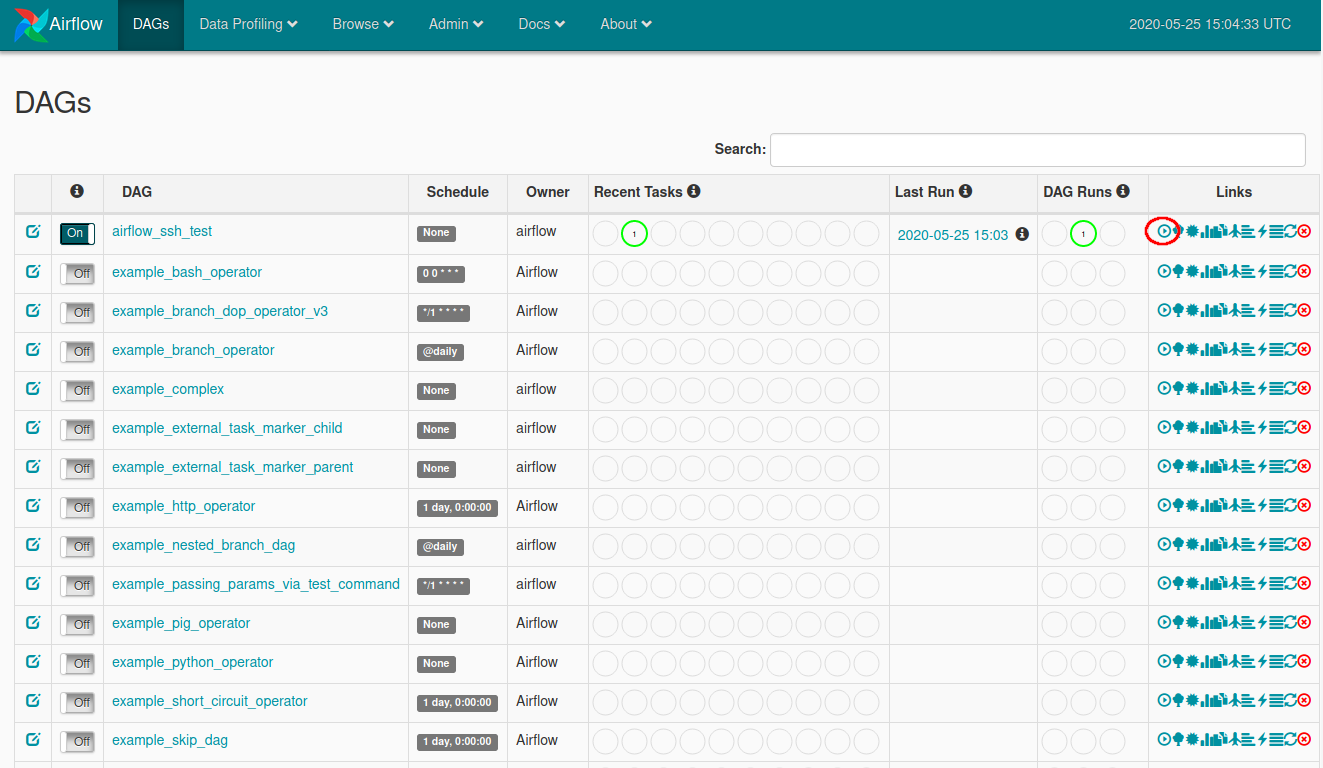
With NativeEnvironment, rendering a template produces a native Python type. When render_template_as_native_obj is set to True. datetime ( 2021, 1, 1, tz = "UTC" ), catchup = False, render_template_as_native_obj = True, ) ( task_id = "extract" ) def extract (): data_string = '. If your URLs aren't being generated correctly (usually they'll start with instead of the correct hostname), you may need to set the webserver base_url config.Dag = DAG ( dag_id = "example_template_as_python_object", schedule = None, start_date = pendulum. Like in ingestion, we support a Datahub REST hook and a Kafka-based hook. In order to use this example, you must first configure the Datahub hook. Step 1: Make the Imports Step 2: Create the Airflow DAG object Step 3: Add your tasks Training model tasks Choosing best model Accurate or inaccurate Step 4: Defining dependencies The Final Airflow DAG Creating your first DAG in action Conclusion Use Case As usual, the best way to understand a feature/concept is to have a use case. lineage_emission_dag.py - emits lineage using the DatahubEmitterOperator.Note that configuration issues will still throw exceptions.Įmitting lineage via a separate operator graceful_exceptions (defaults to true): If set to true, most runtime errors in the lineage backend will be suppressed and will not cause the overall task to fail.capture_executions (defaults to false): If true, it captures task runs as DataHub DataProcessInstances.capture_tags_info (defaults to true): If true, the tags field of the DAG will be captured as DataHub tags.capture_ownership_info (defaults to true): If true, the owners field of the DAG will be capture as a DataHub corpuser.
#Airflow 2.0 dag example code
cluster (defaults to "prod"): The "cluster" to associate Airflow DAGs and tasks with. Streamline your Pipeline Code with Functional DAGs in Airflow 2.0 14:58:22 Intro to AIP-31 AIP Airflow Improvement Proposal AIP-31 was developed collaboratively across Twitter (Gerard Casas Saez), Polidea (Tomasz Urbaszek), and Databand.


For reference, look at the sample DAG in lineage_backend_demo.py, or reference lineage_backend_taskflow_demo.py if you're using the TaskFlow API. After installing dag-factory in your Airflow environment, there are two steps to creating DAGs. Note that configuration issues will still throw exceptions.Ĭonfigure inlets and outlets for your Airflow operators. If set to true, most runtime errors in the lineage backend will be suppressed and will not cause the overall task to fail. If true, the tags field of the DAG will be captured as DataHub tags. If true, the owners field of the DAG will be capture as a DataHub corpuser. The name of the datahub connection you set in step 1. Add your datahub_conn_id and/or cluster to your airflow.cfg file if it is not align with the default values.


 0 kommentar(er)
0 kommentar(er)
